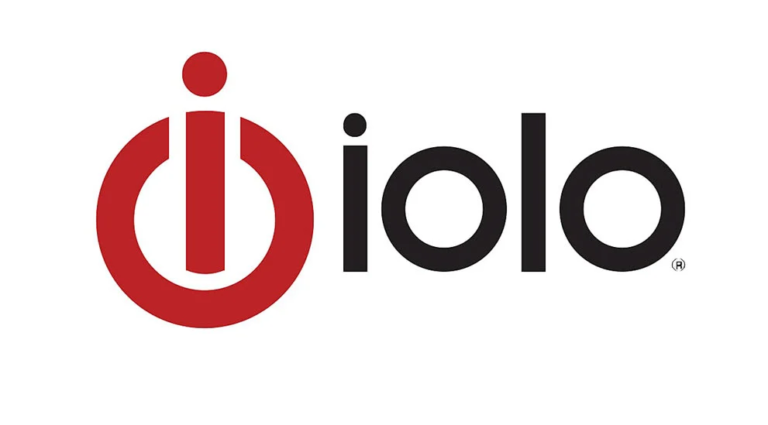Today’s digital realm highlights the need to protect sensitive data. We create a monumental amount of data daily. It’s been estimated at 2.5 quintillion bytes a day. Imagine that as 250,000 Libraries of Congress. Such figures underscore the critical importance of implementing top-notch data protection solutions. They guard our data from cyber threats and ensure we adhere to data protection laws.
Key Takeaways:
- Data protection is crucial in our digital world of vast data generation.
- Effective solutions are needed to safeguard data from cyber threats and ensure compliance.
- Data protection solutions play a critical role in maintaining data confidentiality, integrity, and availability.
- Implementing secure data protection practices is essential for individuals and businesses alike.
- By prioritizing data protection, we can mitigate the risks associated with data breaches and cyberattacks.
Securing Your Devices and Networks
Protecting your devices and networks is key for data safety. By using security measures, you keep sensitive info safe from access by unauthorized people. Here’s a guide on steps to improve your device and network security:
1. Data Encryption
Encrypting your data keeps it safe, even if it’s stolen. Use encryption tools to secure your important files and data from prying eyes.
2. Backup Your Data Regularly
Backing up data is vital for when things go wrong. Set up a regular backup routine so your critical data is always safe off-site.
3. Make Old Computers’ Hard Drives Unreadable
When getting rid of old computers, ensure their hard drives are unreadable. Use special software or destroy the drives to stop data recovery.
4. Secure Your Wireless Network
Protecting your Wi-Fi stops unwanted access. Change your network’s name, pick a strong password, and use encryption like WPA2 for a more secure wireless network.
5. Use a Firewall
Firewalls guard against internet threats. Turn on your device’s firewall or get a reliable third-party one to watch your network traffic.
6. Encrypt Data on USB Drives and SIM Cards
Encrypt important files on USB drives and SIM cards. That way, if they’re lost, your data is still safe from prying eyes.
7. Disable File and Media Sharing
Turning off sharing helps keep your files private. Check your sharing settings and turn off what you don’t need to share.
8. Create Encrypted Volumes for Portable Data Files
For even more security, make encrypted volumes for your portable files. These need a password or key to open, adding another layer of protection.
9. Overwrite Deleted Files
Deleting files properly is crucial. Use software that overwrites them with random data to make sure they can’t be recovered.
10. Delete Old Files from Cloud Backups
Clean up old files in your cloud storage to reduce risk. Pick a provider with strong data protection to keep your info safe.
Using these security tips will help keep your devices and networks safe. This safeguards the confidentiality and integrity of your personal data.
Data Protection Tips for Mobile Devices
In our modern, digital world, mobile devices have become indispensable. They hold a vast amount of personal data, underscoring the importance of data protection. To keep your information secure and your privacy intact, follow these guidelines.
1. Check and Configure App Privacy Settings
Each time you add a new app, delve into its privacy settings. Apps often seek access to your device’s data and permissions. This step allows you to adjust the settings, decreasing the information these apps can collect and share.
2. Enable Remote Location and Device-Wiping
If your mobile device goes missing or gets stolen, having the option to remote locate and wipe it clean is invaluable. With these features activated, you can pinpoint your device’s position. You can also erase all data to block unauthorized access to your personal information.
3. Take Care of Privacy Settings Immediately Upon Setup
Setting up a new mobile device? It’s vital to focus on the privacy settings as you start. By methodically configuring your device’s privacy settings initially, you add essential layers of protection to your data.
Following these mobile device data protection tips is fundamental for keeping your personal data safe. They allow you to enjoy the conveniences of mobile technology while ensuring your data is protected. Being proactive in managing your data’s privacy is key to security.
| Mobile Device Data Protection Tips | Key Benefits |
|---|---|
| Check and configure app privacy settings | – Limit the data shared and stored by apps – Enhance app privacy and security |
| Enable remote location and device-wiping | – Track lost or stolen devices – Prevent unauthorized access to data |
| Take care of privacy settings immediately upon setup | – Establish necessary safeguards from the start – Ensure data protection from the beginning |
Understanding Data Protection Solutions
Data protection solutions are key to keeping your data safe. As the need for security grows, businesses work to shield their sensitive info. These solutions use various tools and methods. They ensure your data stays private, complete, and accessible.
Data backup and recovery are critical. This involves making copies of your data and keeping them safe. These backups let you quickly get back your information if it’s lost. This reduces downtime and keeps your business running smoothly.
Data replication and redundancy are also important. By having more than one data copy, you increase its availability. This means if one copy is lost, you can still find your info elsewhere.
For data you don’t use often, data archiving is a must. This means moving old data to a different storage place. It saves space and money, and you can still get that data back when necessary.
Disaster recovery steps in if the worst happens. It’s all about getting critical systems and data back after a disaster. This keeps the business going even after a major setback.
Continuous data protection offers backups as your data changes in real time. This ensures every tiny update is safely saved. It makes sure your latest info is always secure.
With the advent of cloud computing, Data Protection-as-a-Service (DPaaS) is changing the game. It offers data protection through the cloud. This gives businesses the chance to use cloud benefits for their data’s safety.
Data Protection Solutions at a Glance
| Data Protection Solution | Description |
|---|---|
| Data Backup and Recovery | Creating copies of data for quick restoration in case of data loss or system failure. |
| Data Replication and Redundancy | Creating multiple copies of data to improve availability and accessibility. |
| Data Archiving | Moving infrequently accessed data to a separate storage location for long-term preservation. |
| Disaster Recovery | Restoring critical systems and data after a disaster to ensure business continuity. |
| Continuous Data Protection | Real-time backups of data changes for comprehensive data protection. |
| Data Protection-as-a-Service | Cloud-based data protection solutions for convenient and flexible data security. |
Using a mix of these solutions forms a strong data protection. It helps stop data loss and ensures data is always available. It also helps meet rules on data security. Knowing and using these solutions makes sure your data is safe.

The Importance of Data Protection
In today’s digital landscape, data protection stands as a critical priority. The sheer volume of data is growing rapidly. This makes it essential for businesses to secure their information. The threat of cyberattacks compounds the need for stringent data safety measures. Organizations are also bound by law to protect personal data, under various compliance requirements.
The fallout from data breaches is severe, encompassing reputation harm and financial setbacks. Neglecting data protection also jeopardizes customer trust and can lead to legal trouble. Therefore, a thorough approach to data protection is crucial. It’s a means to avert these dire consequences.
Exploring the facets that underpin the necessity of data protection reveals its gravity. Let’s delve deeper into these aspects:
- Increasing data volume: The digital era has fueled a data explosion. The emergence of tech devices and online services has flooded companies with data. Thus, ensuring its security is vital to maintaining trust with clients and integrity in operations.
- Rising cyberattacks: Modern cyber threats are more sophisticated and widespread. Data thieves aim to exploit valuable information. By fortifying their defenses, companies can better protect their data against these evolving threats.
- Compliance requirements: An array of regulations exists to guard personal data. Adhering to laws like the GDPR is obligatory. Violations of these norms can lead to hefty fines and legal repercussions, highlighting the importance of compliance.
Highlighting the gravity of data protection is essential, as depicted by the table below. It outlines the significant fallout from a data breach:
| Consequences of Data Breach | Description |
|---|---|
| Reputational damage | An organization’s reputation can be severely hit by a data breach, causing loss of trust. Negative publicity might endure, affecting future business adversely. |
| Financial losses | The costs of a data breach are not just monetary; they include legal, regulatory, and remediation expenses. These can be substantial and long-lasting. |
| Loss of competitive advantage | Confidential information at risk from a breach can tilt the competitive landscape, harming a company’s market position. |
| Legal consequences | Non-compliance with data laws carries serious penalties, from fines to legal repercussions, even from individuals affected by a breach. |
Understanding data protection’s critical role inspires businesses to bolster their defenses. This includes adopting advanced security tools and educating staff on security protocols. With a focus on data protection, organizations not only safeguard their assets but also enhance customer trust.
Common Data Protection Solutions
Keeping your valuable information secure is key to business success. By utilizing various technologies and methods, companies can reduce the threats of data loss and unauthorized access. Below are some key solutions for protecting your data:
Data Backup and Recovery
Backing up and recovering data is essential. Doing this creates a copy of your information for restoration if data gets lost or the system fails. This process safeguards your most critical data and decreases downtime significantly.
Data Replication and Redundancy
Copying your data to multiple locations increases its availability and decreases the risk of total loss due to failures or disasters. With redundant copies, quick access to vital information is ensured and the impact of unexpected incidents is lessened.
Data Archiving
Moving old or less-used data to long-term storage can save costs and ensure important information is maintained for legal or regulatory requirements. Archiving improves system performance by separating active and archived data.
Disaster Recovery
For disasters like natural events or cyberattacks, a recovery plan is crucial. This plan includes backup and recovery, special hardware/software, and predefined strategies. Such a plan helps businesses recover quickly and reduces the impact of such sudden events.
Continuous Data Protection
CDP captures every data change in real-time and creates incremental backups. This method, unlike traditional backups, offers protection for every change, cutting down on data loss risks and as a result, minimizing recovery objectives. This enhances data protection and recovery for businesses.
Data Protection-as-a-Service
DPaaS is a cloud-based solution where a service provider manages your data protection. It includes various services like backup, recovery, replication, disaster recovery, and encryption. Businesses can benefit by outsourcing their data protection, leaving them free to focus on their core activities, with the confidence that their data is safe and available.
Best Practices for Ensuring Data Privacy
Protecting sensitive data is key to maintaining user trust. It is essential to follow best practices for data privacy. These will keep your data safe and create a secure environment for users.
1. Inventory Your Data
Start by knowing what data you have and where it’s stored. This gives you a full picture of your data and helps spot vulnerabilities. Knowing data locations lets you apply the right security to prevent unauthorized access.
2. Minimize Data Collection
It’s smart to collect as little data as possible. Only gather data that you need for business. This way, you reduce the impact of a data leak and legal duties.
3. Be Transparent with Users
Openness is crucial for earning users’ trust. Explain clearly how you collect, store, and use data. Have detailed privacy policies that show how you protect data. Being straightforward about data practices helps users understand and decide on their privacy.
By incorporating these strategies into your data privacy plan, you strengthen your system. This protects sensitive information and keeps user trust.
| Data Privacy Best Practices | Description |
|---|---|
| Inventory Your Data | Take stock of your data and determine where it is stored to implement appropriate security measures. |
| Minimize Data Collection | Collect only the necessary data to reduce the risk of a data breach and legal obligations. |
| Be Transparent with Users | Communicate clearly about data collection, storage, and usage to build trust and empower users. |
Following these recommendations does more than secure your data. It also boosts your image as an organization that respects user privacy.

Data Protection Trends
Data protection morphs with every innovation, demanding a vigilant eye on new trends. The surge of technology and cyber threats shapes these trends, urging all entities to evolve their protection strategies. Let’s delve into pivotal trends influencing the data security sector.
Data Portability
In our digital realm, the mobility of data is becoming pivotal. Data portability entails the seamless transfer of data across various platforms. This leverages user empowerment, fosters market competition, and stimulates innovation. It enables effortless provider transitions without data loss worries.
Mobile Data Protection
The proliferation of mobile gadgets ushers in fresh security hurdles. Given the vast stores of private data on mobiles, robust safeguards are paramount. Strategies like data encryption, secure app development, and device management from afar safeguard mobile data.
Ransomware
Ransomware has emerged as a significant threat, impacting individuals and organizations. This malicious software encrypts data, demanding a ransom for its release. Guarding against such attacks necessitates regular data backups, stringent security measures, and training to spot anomalous behavior. Solid protective barriers are critical in fighting off and limiting ransomware damages.
Copy Data Management
Copy Data Management (CDM) concentrates on the efficient oversight of data duplicates. Its primary goals include discarding superfluous copies while ensuring data reliability and accessibility. By managing data copies effectively, companies can cut down on storage expenditure, enhancing their data handling approaches.
Disaster Recovery as a Service
Disaster Recovery as a Service (DRaaS) marks a cost-efficient and adaptable approach to recovery from catastrophes. It utilizes cloud resources to mirror essential data and systems, ensuring swift recovery. This model redefines disaster recovery, offering flexibility, agility, and saving resources to organizations.
Summary Table: Data Protection Trends
| Trend | Description |
|---|---|
| Data Portability | Enables users to move their data between platforms and services for greater control and flexibility. |
| Mobile Data Protection | Focused on safeguarding data on mobile devices given the unique risks they pose. |
| Ransomware | Proactive measures to prevent and mitigate the impact of ransomware attacks. |
| Copy Data Management | Efficiently managing multiple copies of data to reduce costs and improve data management. |
| Disaster Recovery as a Service | Utilizing cloud resources for scalable and cost-effective disaster recovery solutions. |
Data Protection and Privacy with Cloudian HyperStore
Cloud storage solutions are crucial for data protection. Cloudian HyperStore stands out among them. It ensures your data’s safety and integrity with its advanced protection features.
Data replication is a standout function of Cloudian HyperStore. It creates multiple data copies. This approach guarantees access to your information, even if one copy is lost or inaccessible. Such a strategy increases data resilience and reduces the chance of data loss.
Erasure coding, another key feature, minimizes storage space use without compromising data trustworthiness. It breaks data into pieces and includes error-correction codes. This method protects against data corruption even when hardware fails, offering peace of mind.
For safeguarding sensitive information, data encryption is invaluable. With Cloudian HyperStore, you can encrypt data for security during transmission or while stored. This technique adds an invaluable security layer, keeping unauthorized users away from your data.
Data immutability, which stops data from being changed or removed, is also critical. Cloudian HyperStore ensures your data’s immutability, protecting it from tampering and unauthorized edits. This strengthens data integrity and protects against various threats.
Managing data in diverse cloud settings can be challenging. Cloudian HyperStore simplifies this complex task. It makes managing data across different cloud environments straightforward, ensuring data remains available and meets regulatory standards.
Cloudian HyperStore is a complete solution for data protection. Its features, including data replication, erasure coding, encryption, immutability, and multi-cloud management, safeguard your data comprehensively. This suite helps maintain your data’s confidentiality, integrity, and accessibility, meeting security and compliance needs.
Conclusion
Data protection stands as a crucial shield in the digital world. It guards against cyber threats that are multiplying. To keep our secrets safe, everyone must use strong measures.
Organizations must secure every device and network. They should use the latest in data protection tools and follow strict privacy rules. This way, their data remains confidential and safe.
Staying informed about new threats is vital. Investing in technologically advanced solutions, such as Cloudian HyperStore, can greatly improve protection.
Cloudian HyperStore enhances data security with its advanced features. It offers data duplication, erasure coding, and encryption for maximum safety. Moreover, it manages data across clouds, making protection effective in all cloud services.
With a focus on data protection and tools like Cloudian HyperStore, companies cement their security. They also ensure they follow data security laws. Doing so protects valuable information and builds trust with the people they serve.



